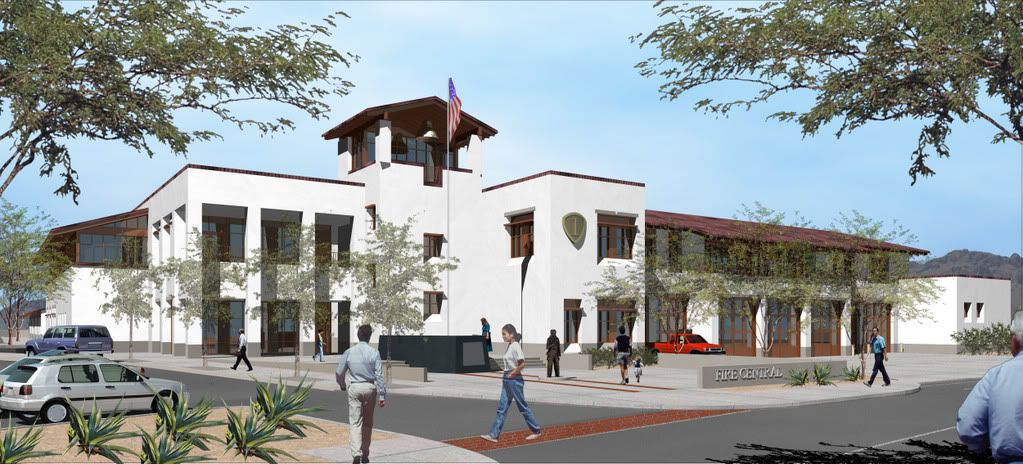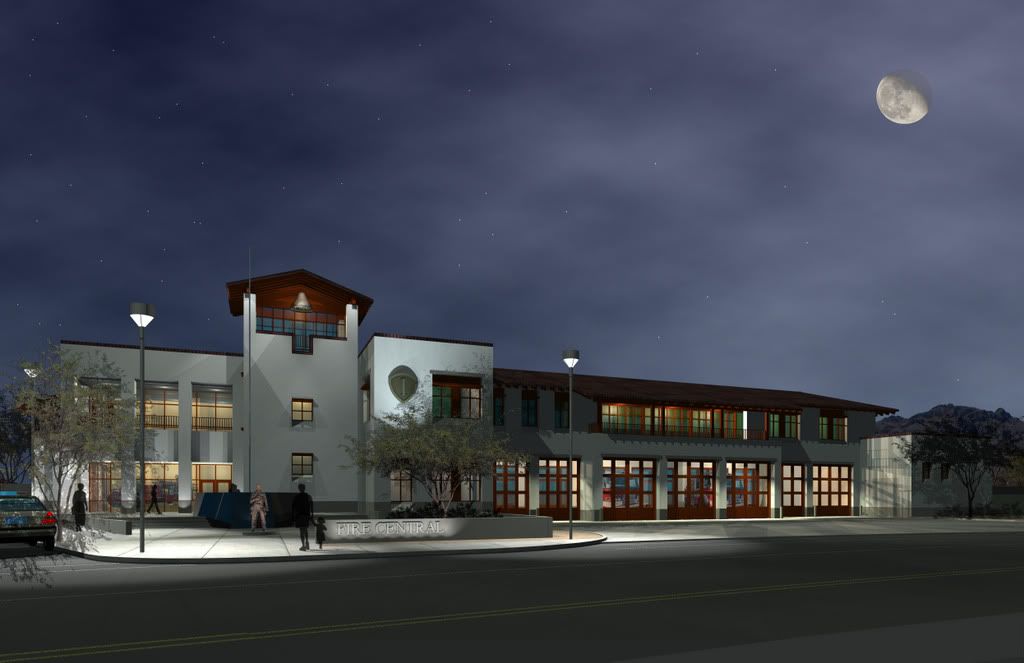
MikeB
-
Posts
765 -
Joined
-
Last visited
Content Type
Profiles
Forums
Events
Articles
Marionette
Store
Posts posted by MikeB
-
-
I've found that switching to the OpenGL or Wireframe mode during the rending process will stop the rending and switch to that mode.
the esc key no longer seems to stop the current rendering in VW2019
-
 1
1
-
-
So I started this post on in September of 2016, the thread was recently closed but this issues is not resolved
VW2019 SP2, both window and mac. After initially using either final renderworks mode or the Realistic Exterior Renderworks style, subsequent updates to the geometry, either through editing geometry, adding geometry, deleting geometry, or simply by turning on or off existing layers, will not render in subsequent use of the renderworks engine. the subsequent renderings go through the process, and you can see in the indirect lighting stage of the rendering that the changed geometry is not being considered by the rendering engine. Somehow VW is retaining the old geometry and using that for the renderworks renderings.
Only fix is to save the file, quit and restart VW, but any further geometry changes again require a restart to render correctly after the first renderworks rendering is done after restart.
Very frustrating and a big waste of time.
-
I've not found a solution, still having the issue
-
Still having the issue after the update.
Last time I had changed the heliodon time of day, but the shadows would not update in final renderworks until I quit VW and restarted.
-
VW2017
I'm having an issue with the Final Quality Renderworks mode
I'm working on a model and render the model on screen in Final Quality Renderworks, then I switch back to open GL and edit an extrusion.
The changes to the extrusion show up in open GL, but when I switch to Final Quality Renderworks, the rendering show up almost immediately , but the changes to the extrude are not shown. It appears to be showing a cashed version of the rendering and not actually re-rendering.
If I select Final Quality Renderworks again, it asks if I want to re-render the scene, I say yes, but it still shows the old geometry.
The only way I've found around this is to quit and restart VW
I tried setting the Retain Rending Model in the VW preferences to Never, that didn't help
Thanks
-
I also just realized you have to apply a transparent texture to the area light to be able to see thru it, but you still get the illumination from the area light
-
Shaun,
They can co-exist. Select the area light and un-check the cast shadows box in the object info palette. You still get the shadows from the sun thru the window and the illumination of the area lights
-
Dave,
What is the intended use of this?
Is it for abmient illumination while still using a sun source, or should it be used by itself without any other light sources?
Thanks
-
I havent used 3dmax in years (10+/-) so I can't speak for that but these images were produced in VW11, there was some photoshop work, people, trees, sky was replaced, background landscape, But the building and general lighting were done using RW Final quality ray trace rendering.


12 has more advanced rendering, but I havent gotten a feel for it yet.
-
For simple grid hatches, like tile, you can use the ceiling grid tool under the MEP tool set. It allows you to set the grid spaceing and then you can dynamicaly set the origion
The tool basically lets you draw a polyline that it autofills with the grid spacing and angle set in the tool preferences. Then once you've created the object, double click the grid and 5 points will appear, the center point can be dragged around to set the origion.
I think Landmark has a similar tool for paving patterns that has more capability and flexibility as far as the patterns you can use.
Good Luck
-
I think NNA offers a cross platform license, unless you need XP for other apps it may be cheaper to change your VW license
-
I have to admit its some comfort to know others are having trouble with lighting using radiosity. Personally I think I've gotten so used to "faking" the lighting (both thru the manipulation of the lighting itself and changing the material attributes) under the raytrace engine that I'm having alot of trouble adjusting to both the HDRI system and radiosity.
-
We have individual files for the design layers and then bring those in to a master file for printing. All our sheets and VPs are set up in there. That way we can have as many people working on a single project as we do deign layers plus one working on the master file. works great for crunch time efforts.
We'll, thats brilliant, I hadn't thougt of doing it that way.
-
I have the same experience, with a large team working on a large project you could easily have every floor and every reflected ceiling plan in seperate files and workgroup reference between them for the revelent information. This workflow is particularly useful in the crunch times when redlines are being picked up by multiple interns or cad techs.
I think the preferred workflow is dependent on the scale of the project.
-
Check your material settings, its possible that if you inserted an object with a glass material using the same name but different material settings, the material attributes could have been changed. In particular check the Mirror and Transmission settings, or simply rest the default Simple Glass Material settings and see if that helps.
Good Luck
-
Hello,
It seems to me that several versions ago when you would edit white text with no background color assigned you could still read the text while you edited it, but for the last few versions the text background reverts to white as a default while editing, making white text nearly impossible to create or easily edit.
This kind of stinks for me, I like using white text fairly often. Could NNA look at this and see if there is any fix available?
Thanks
-
It has a few refelctive surfaces, some glass, some chairs with aluminum legs. Its also a bit of a mess as far as files go, some geometry came from ACAD, most was generated in VW 11 for an exterior view, now I'm modifying it in 12 for an interior view.
I was have alot of trouble rendering it so I got some simpler chairs (its a large meeting room with loose seating), converted a light fixture I made from an extrude along path to 3-D polygons, got rid of all the geometry that wasn't in the view, purged the file, and I lowered the recursion level. So I'm not sure what exactly tiped the scale, but it seems to render OK now.
Another thing I was wondering is how do the linear lights work? They also seem to increase the rendering time, and on some older machines it makes them unusable. Is this normal?
Thanks
-
I noticed that final renderworks rendering seems slower under 12, then I noticed that the defaut recursion level for the custom renderworks is 64. Is this also the recursion level for the final mode. If so that explains alot, I thought the limit on recursion level under 11 was 9.
Thanks
-
Mark,
To use a different HDRI background from the rendered background, go to the ambient lighting settings under the View menu, LIghting, set layer lighting options.
-
Thanks Dave and all, I'm beginning to get it.
-
DAve,
Will this give the ambient sky illumination w/o a sun source?
Thanks
-
Hello all, I have a few questions.
I've just upgraded to 12.5 and have been playing with the radiosity and HDRI, first off it's really cool. Second, I've quickly realized how much I was having to tweek textures to get them to appear realistic using the ray trace engine under 11 and previous versions.
So here's my questions
1. All the free HDRI resource I've looked at seem to have a fairly low sun angle. Is there a reason for this? For the Architectural renderings that I do, I really need a higher sun angle than what I've been able to find. The finished renderings always look like dawn or dusk.
2. Does it make sense and is it possible use a HDRI background that is simply the ambient sky illumination with no sun and use a directional light to create the primary shadows. If so, does anyone know where I can find or how I can create a simple HDRI for the ambient illumination. It seems to my simple brain that this would give me the benifits of the HDRI technology, but I can keep the controll of the primary light source for the model as I've always been able to do.
Any thoughts appreciated
Thanks
-
Believe it or not, that song was on the radio while I was reading the thread,
Very funny Peter,
Thanks for the smile
-
Make sure none of your layers are in a 3-D view, if some are in a 3-D view, the "Show Snap Modify" setting won't work on any of those layers.
Also just FYI if you group things across layers all of the objects will be moved to the current active layer.
Good Luck
[ 03-28-2005, 04:13 PM: Message edited by: MikeB ]

Renderworks - Geometry not updating
in Rendering
Posted
I didn't submit a bug file, not sure how to do that.
I guess my original thread got hijacked by the view-ports turning black issue.